Introduction to Vietnamese Caramel Ginger Chicken
Vietnamese cuisine is a vibrant tapestry of flavors, textures, and culinary techniques that reflect the rich cultural heritage of Vietnam. Renowned for its balance of sweet, salty, sour, and spicy elements, Vietnamese dishes are often fresh, fragrant, and full of life. One of the standout dishes that exemplifies this balance is Vietnamese Caramel Ginger Chicken. This dish, with its aromatic ginger, savory chicken, and the sweet depth of caramel, offers a delightful experience that transports your taste buds straight to the bustling streets of Vietnam.
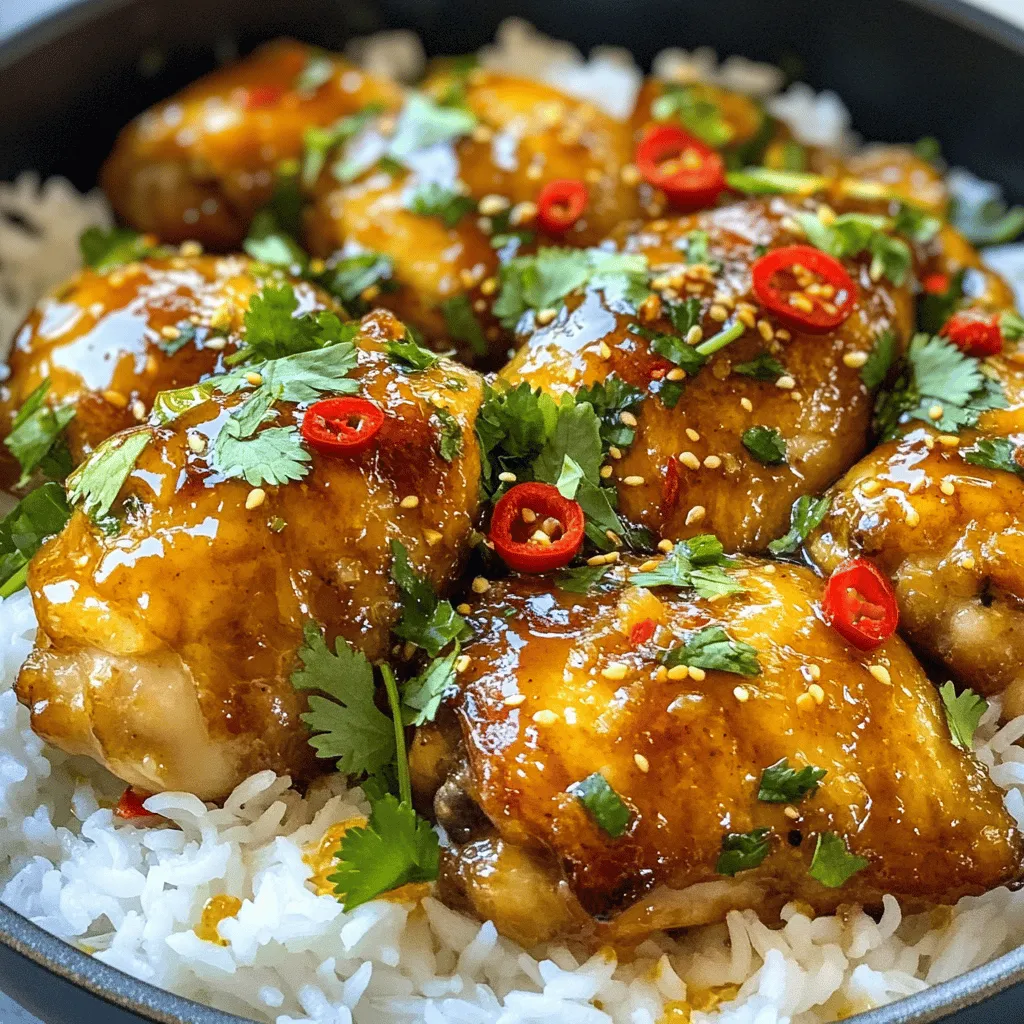
The art of caramelization plays a critical role in this dish, providing a unique depth of flavor that elevates the chicken to a whole new level. As the sugar melts and transforms into a rich, amber syrup, it creates a beautiful glaze that coats each piece of chicken, enhancing not only the flavor but also the dish’s visual appeal. The combination of caramelized sugar with savory ingredients is a classic technique in Vietnamese cooking that highlights the harmony between sweet and savory.
In this article, we will delve into the intricacies of preparing Vietnamese Caramel Ginger Chicken, exploring its rich background, the essential ingredients that contribute to its unique flavor profile, and a comprehensive step-by-step guide to creating this dish in your own kitchen.
Understanding the Ingredients
To truly appreciate Vietnamese Caramel Ginger Chicken, it’s important to understand the key ingredients that come together to create this dish. Each component plays a vital role, not just in flavor but also in texture and health benefits.
Chicken Thighs
The star of this dish is undoubtedly the chicken, specifically chicken thighs. Choosing boneless, skinless thighs is recommended for several reasons. First, chicken thighs are more flavorful and juicier than breast meat, thanks to their higher fat content. This richness allows them to absorb the flavors of the marinade and the caramel sauce more effectively. Additionally, using boneless and skinless pieces simplifies the cooking process, making it easier to achieve tender, evenly cooked chicken without the hassle of dealing with bones or skin.
The Role of Sugar in Caramelization
Sugar is a fundamental ingredient in this recipe, as it is the key player in the caramelization process. When heated, sugar undergoes a chemical change that transforms it from a granulated state into a rich, liquid syrup. This transformation not only alters the flavor, giving it a deep sweetness, but also enhances the dish’s color and texture. The caramelized sugar creates a beautiful glaze that clings to the chicken, providing a sweet contrast to the savory elements of the dish.
Exploring Fish Sauce and Soy Sauce
Fish sauce and soy sauce are two essential components of Vietnamese cooking that contribute distinct flavors to the Caramel Ginger Chicken. Fish sauce, made from fermented fish, adds a unique umami flavor that is deeply ingrained in Vietnamese cuisine. Its salty, savory depth provides a contrast to the sweetness of the caramel and the freshness of the ginger. On the other hand, soy sauce introduces a different type of umami, with its rich, fermented flavors complementing the overall dish. Together, these sauces create a balanced flavor profile that is both complex and satisfying.
The Importance of Ginger and Garlic
Ginger and garlic are indispensable in this recipe, both for their robust flavors and their health benefits. Ginger, with its spicy warmth, adds a fragrant kick that elevates the dish, while garlic contributes its aromatic depth. Both ingredients are known for their anti-inflammatory and antioxidant properties, making them not only delicious but also beneficial for health. The combination of ginger and garlic in the marinade infuses the chicken with a fragrant aroma that tantalizes the senses even before cooking begins.
Additional Ingredients
Aside from the primary ingredients, there are several others that play a significant role in enhancing the dish.
- Onion: Adds sweetness and depth to the overall flavor. Caramelized onions can bring an additional layer of complexity to the dish.
- Chili: Introduces a hint of heat, which balances the sweetness of the caramel. The amount can be adjusted based on personal preference.
- Cilantro: Often used as a garnish, cilantro adds a fresh, herbaceous note that brightens the dish and complements the savory flavors.
- Lime Juice: A splash of lime juice at the end of cooking adds acidity, which cuts through the richness of the caramel and chicken, providing a refreshing finish.
Step-by-Step Guide to Preparing Vietnamese Caramel Ginger Chicken
Now that we have a firm grasp on the ingredients, it’s time to dive into the preparation of Vietnamese Caramel Ginger Chicken. This step-by-step guide will walk you through the process, ensuring you create a deliciously authentic dish.
Preparing the Chicken
Start by preparing the chicken thighs. If they are not already boneless and skinless, carefully remove the skin and bones. Cut the chicken into bite-sized pieces to ensure even cooking and maximum flavor absorption. This also makes it easier to serve and enjoy.
Next, it’s important to marinate the chicken to infuse it with flavor. In a bowl, combine the chicken pieces with minced garlic, grated ginger, fish sauce, soy sauce, and a pinch of sugar. Allow the chicken to marinate for at least 30 minutes, or longer if possible. This step is crucial, as it allows the flavors to meld and penetrate the meat.
Caramelizing the Sugar
Caramelizing sugar is both an art and a science. To begin, place a heavy-bottomed skillet over medium heat and add a couple of tablespoons of sugar. It’s best to use granulated sugar for this recipe, as it melts evenly.
As the sugar begins to melt, keep a close eye on it. Stir gently to ensure it doesn’t burn. You want to achieve a beautiful golden-brown color without letting it darken too much, as burnt sugar can impart a bitter taste.
Techniques for Perfect Caramelization
Achieving the perfect caramelization requires patience and attention. Here are some tips to help you avoid common mistakes:
1. Use the Right Pan: A heavy-bottomed pan distributes heat evenly, preventing hot spots that can cause the sugar to burn.
2. Control the Heat: Starting on medium heat allows for controlled caramelization. If the sugar melts too quickly, reduce the heat to avoid burning.
3. Stir Gently: Stirring too vigorously can introduce air and create crystals, which you want to avoid. A gentle swirl is sufficient to encourage even melting.
Adding Fish Sauce to Caramel
Once the sugar has reached the desired caramel color, it’s time to add the fish sauce. This step must be done carefully, as the addition of fish sauce to hot caramel can cause the mixture to bubble vigorously. Stir the fish sauce into the caramel, ensuring that it incorporates well.
Cooking the Chicken
Now that you have your caramel sauce ready, it’s time to add the marinated chicken to the pan. Ensure your chicken is well-drained from any excess marinade to avoid watering down the caramel sauce.
Add the chicken pieces to the skillet, stirring them to coat evenly in the caramel mixture. It’s important to cook the chicken over medium heat, allowing it to sear and develop a beautiful glaze.
Best Practices for Ensuring Even Cooking
To ensure that your chicken cooks evenly:
- Don’t Overcrowd the Pan: If your skillet is too crowded, the chicken will steam rather than sauté, preventing that delicious caramelization. Cook in batches if necessary.
- Turn the Chicken: Allow the chicken to cook undisturbed for a few minutes before turning it. This will help develop a nice crust.
- Monitor Cooking Time: Depending on the size of your chicken pieces, cooking time will vary. Typically, it should take about 6-8 minutes for the chicken to cook through.
With these steps, you are well on your way to creating a mouthwatering Vietnamese Caramel Ginger Chicken that will impress family and friends alike. This dish not only showcases the best of Vietnamese flavors but also highlights the beauty of simple, quality ingredients coming together in harmony.
Stay tuned for the next part, where we will explore the final touches and presentation of this delightful dish, ensuring that it is as visually appealing as it is delicious.
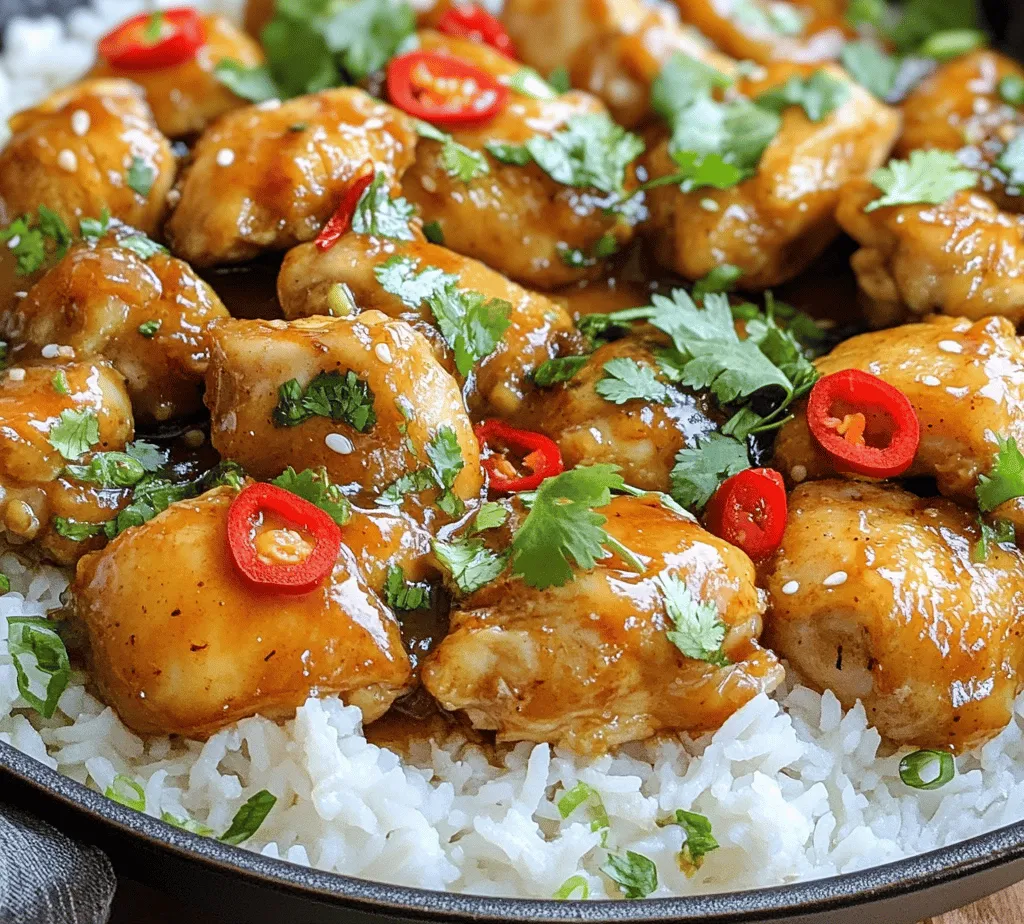
Sautéing the Aromatics
Sautéing the aromatics is a crucial step in preparing Vietnamese Caramel Ginger Chicken. Begin by heating a tablespoon of cooking oil in a heavy-bottomed skillet or a wok over medium heat. Once the oil is hot, add the finely chopped onions. Sauté the onions until they become translucent and start to soften, which typically takes about 3-5 minutes. This process releases their natural sweetness and forms the flavor base for your dish.
Next, add the minced garlic and ginger to the pan. Stir-fry them together with the onions for an additional 1-2 minutes until they are fragrant. The aroma of sautéed garlic and ginger fills your kitchen, setting the stage for the rich flavors to come. Be cautious not to burn the garlic, as it can turn bitter and spoil the overall flavor of your dish.
Importance of Aroma and Seasoning
The importance of aroma and seasoning during the cooking process cannot be overstated. The combination of garlic, ginger, and onion creates a compelling foundation that elevates the dish’s flavor profile. These aromatics not only add depth but also enhance the overall eating experience by stimulating the senses.
As you sauté, sprinkle in a pinch of salt. This step is essential; it helps to draw out moisture from the onions, allowing them to caramelize better while enriching the flavors of the garlic and ginger. Proper seasoning at this stage ensures that each ingredient shines through in the final dish.
How to Achieve the Right Texture for Onions and Garlic
Achieving the right texture for onions and garlic is key to mastering this recipe. The onions should be soft yet slightly caramelized, while the garlic should be just golden. To get the onions to the perfect texture, maintain a steady heat—too high, and they’ll burn; too low, and they might not caramelize properly. Stir frequently to ensure even cooking.
As for the garlic, it should be added after the onions have begun to soften. This timing prevents the garlic from overcooking, allowing it to impart its flavor without becoming acrid. Once your aromatics are perfectly sautéed, it’s time to combine them with the chicken and other ingredients.
Combining Flavors
To combine the flavors effectively, add the marinated chicken pieces into the skillet with the sautéed aromatics. Ensure the chicken is evenly distributed in the pan, allowing it to sear slightly and pick up the flavors from the onions, garlic, and ginger. Stir the mixture gently, ensuring all pieces are coated with the aromatic blend.
Next, introduce the caramel sauce to the pan. This sweet and slightly bitter sauce adds a unique depth to the dish, contrasting beautifully with the savory elements. Stir to combine everything well, allowing the chicken to absorb the caramel flavors. This step is where the magic happens, transforming simple ingredients into a dish that is both delightful and complex.
Balancing the Soy Sauce with the Caramel Mixture
Once the chicken is well-coated in the caramel mixture, it’s time to add soy sauce. Pour in about 3 tablespoons of soy sauce, which will work to balance the sweetness of the caramel. The salty, umami-rich flavor of soy sauce is essential in creating a harmonious blend of tastes. Stir everything together, ensuring that every piece of chicken is evenly coated.
Taste the mixture at this point to assess the balance of flavors. You may wish to adjust the soy sauce or add a bit more sugar if you prefer a sweeter sauce. Remember, cooking is about personal preference, so feel free to make adjustments that suit your palate.
Tips for Simmering to Achieve the Right Consistency
Once all ingredients are combined, reduce the heat to low and cover the skillet. Allow the chicken to simmer gently for about 20-30 minutes. This simmering process allows the flavors to meld beautifully, resulting in tender chicken coated in a rich, sticky sauce.
Check occasionally to ensure the sauce doesn’t dry out. If you find it thickening too quickly, you can add a splash of water or chicken broth to maintain the desired consistency. The end goal is a glossy, thick sauce that clings to the chicken, providing a satisfying texture.
Final Touches Before Serving
As the chicken simmers, keep an eye on its doneness. You want the chicken to be cooked through and tender, with an internal temperature reaching 165°F (75°C). Once the chicken is ready, the final touch involves adjusting the flavor profile with lime juice. Squeeze the juice of one lime over the dish to add brightness and acidity, which cuts through the richness and balances the flavors beautifully.
Taste once more and adjust any seasoning as needed. If you prefer more heat, a sprinkle of black pepper or a touch of chili can be added at this stage.
Importance of Lime Juice and Adjusting Seasoning
The addition of lime juice is not just a flavor enhancer; it also plays a critical role in rounding out the dish. The acidity from the lime helps to brighten the overall flavor, providing a refreshing contrast to the sweetness of the caramel and the saltiness of the soy sauce. This balance is essential in Vietnamese cuisine, where flavors are often layered to create depth.
Adjusting the seasoning is equally important. If the dish tastes overly sweet, a little more lime juice or a dash of fish sauce can help bring it back into balance. Remember, the goal is to create a dish where no single flavor overpowers the others.
Presentation Tips for Garnishing
Presentation is key in Vietnamese cuisine, as it emphasizes the beauty of the ingredients. Once your Vietnamese Caramel Ginger Chicken is ready, serve it in a shallow bowl to showcase the glossy sauce. Garnish with freshly chopped cilantro or green onions for a pop of color and freshness. Thinly sliced red chilies can add a touch of heat and visual appeal.
Consider serving the dish with lime wedges on the side, allowing diners to squeeze fresh lime over their portions for added brightness. The vibrant colors and aromatic garnishes will make your dish visually appealing and tantalizing.
Serving Suggestions
Perfect Pairings with Steamed Jasmine Rice
Vietnamese Caramel Ginger Chicken is best served with steamed jasmine rice. The fluffy, fragrant rice acts as a perfect base, soaking up the flavorful sauce and complementing the dish’s sweetness and savory notes. Prepare your rice while the chicken is simmering to ensure everything is ready at the same time.
Alternative Sides that Complement the Dish
If you’re looking to elevate your meal, consider serving the chicken alongside fresh spring rolls or a light cucumber salad. The crispness of the vegetables provides a refreshing contrast to the rich chicken, while also adding another layer of flavor to your meal. For a more substantial side, you might also consider sautéed bok choy or steamed broccoli, which add color and nutrition to your plate.
Tips for Serving to Impress Guests
When serving to impress guests, presentation is key. Use white or neutral-colored plates to make the colors of the chicken and garnishes pop. Consider serving the dish family-style in the center of the table, allowing everyone to help themselves. Adding a simple yet elegant vase of fresh flowers can enhance the overall dining experience and create a warm, inviting atmosphere.
Cultural Significance of Caramel Ginger Chicken in Vietnamese Cuisine
Historical Background of Caramel Dishes in Vietnam
Caramel dishes hold a special place in Vietnamese cuisine, with a history that dates back centuries. The technique of caramelizing sugar to create rich sauces is a traditional method, often used in various dishes to enhance flavor. Caramel is not just about sweetness; in Vietnamese cooking, it’s about balancing flavors and enhancing the natural umami of ingredients.
Vietnamese Caramel Ginger Chicken is a beloved dish that showcases this technique, highlighting the harmony of sweet, salty, and sour flavors that is so characteristic of Vietnamese food. The dish has evolved over time, becoming a staple in many households, celebrated for both its taste and its comforting qualities.
The Role of This Dish in Family Gatherings and Celebrations
Caramel Ginger Chicken is often a centerpiece at family gatherings and special occasions in Vietnam. It embodies the warmth of home-cooked meals, bringing families together to enjoy delicious food and share stories. Its rich flavors make it a crowd-pleaser, appealing to both young and old.
During festive occasions, such as Lunar New Year celebrations, this dish might be prepared to honor traditions and celebrate the coming year. The combination of flavors and the inviting aroma make it a dish that resonates with nostalgia and comfort.
Variations of the Recipe Across Different Regions of Vietnam
Like many traditional dishes, variations of Caramel Ginger Chicken exist across different regions of Vietnam. In the north, the dish may be prepared with a stronger emphasis on soy sauce, while southern versions might incorporate more sugar to enhance the sweetness. Some regions might also add coconut water or different vegetables to the mix, showcasing the diversity of ingredients available in each area.
Despite these variations, the core essence of the dish remains the same—highlighting the balance of flavors that define Vietnamese cuisine. Exploring these regional differences can be a delightful journey for those looking to immerse themselves in the culinary landscape of Vietnam.
Nutritional Information
Breakdown of Calories and Nutritional Content
Vietnamese Caramel Ginger Chicken provides a balanced meal with a variety of nutrients. A typical serving contains approximately 300-400 calories, depending on portion size and the amount of sauce consumed. The dish is rich in protein due to the chicken, while the ginger and garlic contribute antioxidants and anti-inflammatory properties.
Health Benefits of the Ingredients Used
The ingredients in this dish not only contribute flavor but also offer numerous health benefits. Ginger, known for its anti-inflammatory properties, can aid digestion and boost the immune system. Garlic is another powerhouse, known for its potential to lower blood pressure and cholesterol levels. The use of fresh lime juice also adds a dose of vitamin C, promoting overall health.
Balancing This Dish Within a Healthy Diet
While Vietnamese Caramel Ginger Chicken is flavorful and satisfying, it is essential to enjoy it in moderation, especially considering its sugar content from the caramel. Balancing your meal with plenty of vegetables and whole grains, such as brown rice or quinoa, can create a nutritious plate. This way, you can enjoy the rich flavors without compromising your health goals.
Conclusion: The Joy of Cooking Vietnamese Caramel Ginger Chicken
Preparing Vietnamese Caramel Ginger Chicken is not only about following a recipe; it’s an experience that invites you to explore the vibrant flavors and techniques of Vietnamese cuisine. The process—from sautéing aromatics to balancing flavors—allows you to immerse yourself in the art of cooking, creating a dish that is both satisfying and delicious.
With its rich combination of sweet, salty, and tangy flavors, this dish promises to be a highlight on any dinner table. As you savor each bite, you’ll appreciate the balance of flavors and the joy of sharing this meal with family and friends.
I encourage you to explore the beautiful world of Vietnamese cuisine through this recipe. Whether for a special occasion or a casual weeknight dinner, Vietnamese Caramel Ginger Chicken is sure to impress and satisfy, leaving you and your loved ones eager for more.
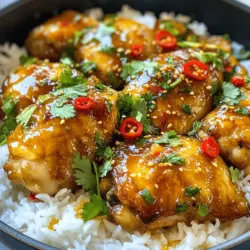

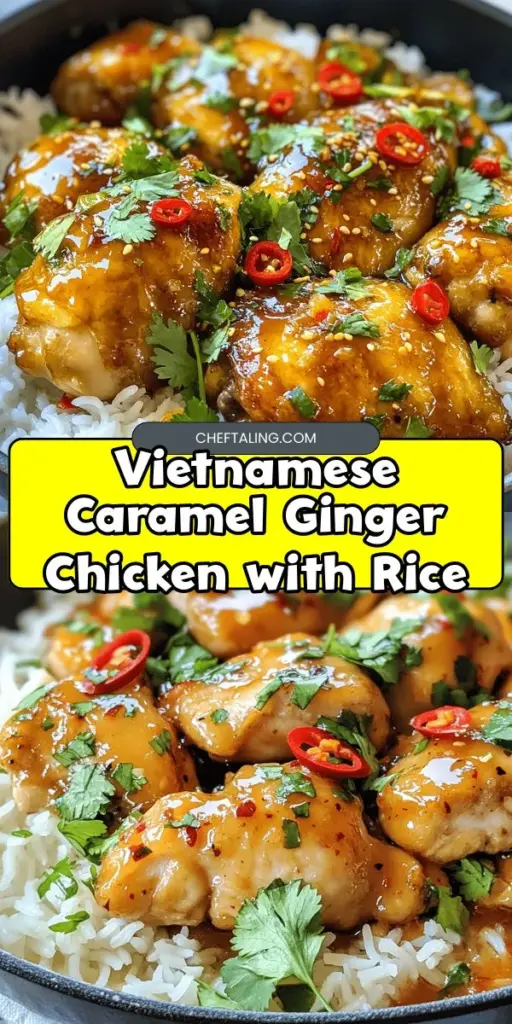

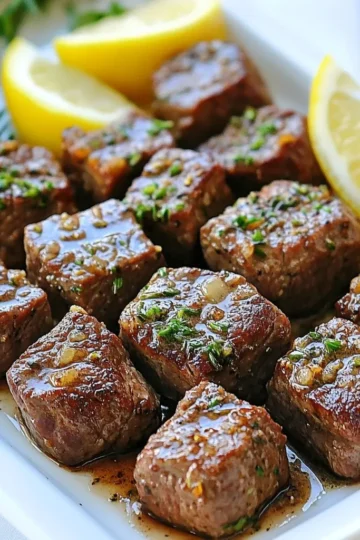
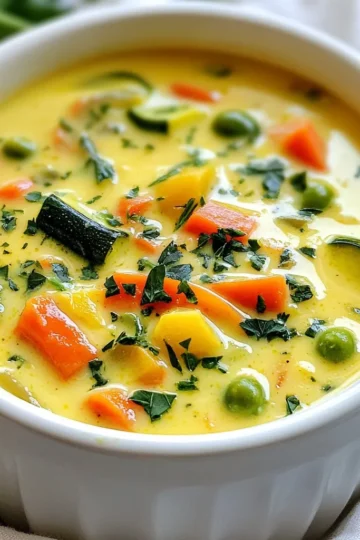
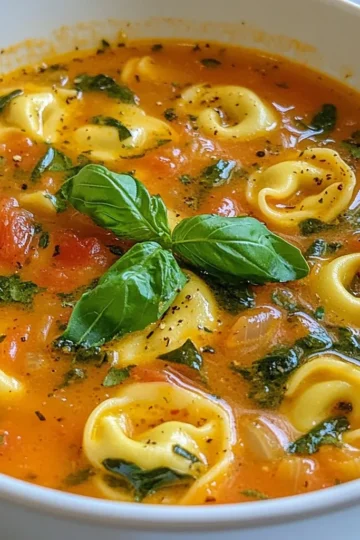
Leave a Reply